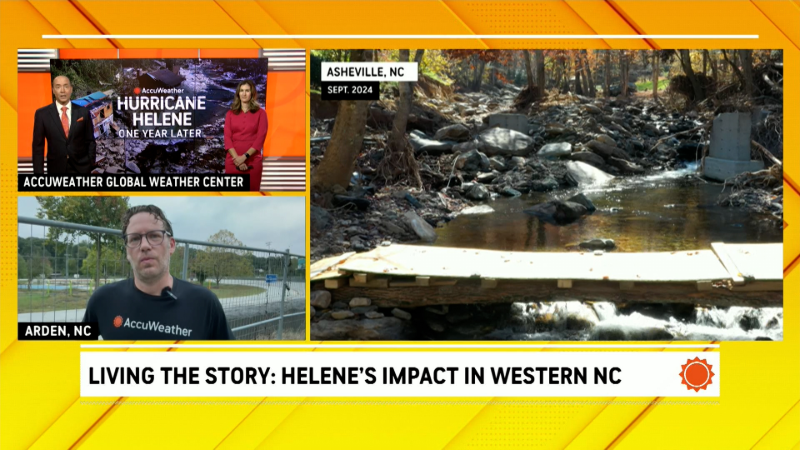What is the Fujiwhara Effect?
Storms can't collide, but when two low pressure systems get within 850 miles of each other, they can swirl around each other in the atmosphere.
AccuWeather’s Melissa Constanzer explains the complexities of the Fujiwhara Effect and how it can significantly complicate the task of forecasting a storm’s path.
Tropical Storm Humberto and what will likely be Tropical Storm Imelda could spin close to each other this weekend, and the internet wants to know: What happens if they get too close?
Storms can't collide head-on, but when two low pressure systems get within 850 miles of each other, they can swirl around each other in the atmosphere. This is called the Fujiwhara Effect, named for Japanese meteorologist Sakuhei Fujiwhara.

The most obvious Fujiwhara Effect occurs when the storms are the same strength and they rotate around each other. The more likely scenario is that the energy from one storm gets absorbed into the other, with the smaller storm becoming a part of the larger, stronger storm. In that case, they may rotate briefly around each other until finally merging, or eventually spinning out onto their own paths.
Recent storms that were forecast to experience the Fujiwhara dance were Tropical Cyclone Seroja and Tropical Storm Odette in the South Pacific in 2021, Hurricane Delta and Hurricane Gamma in the Atlantic in 2020, Hurricane Hilary and Hurricane Irwin in the East Pacific Basin in 2017, and Hurricane Matthew and Hurricane Nicole in the Atlantic in 2016.

Hurricanes Hilary and Irwin experience the Fujiwhara Effect in the East Pacific in 2017 (NOAA)
Because Fujiwhara interactions are complex and computer weather forecast models don't handle them well, forecasting the effects of the two tropical storms can be more challenging than usual, as will be the case with Humberto and what is expected to become Imelda.
The Fujiwhara Effect can happen with any low pressure systems, including smaller systems such as tornadoes, which happened in Akron, Colorado, in 2023.
Report a Typo














